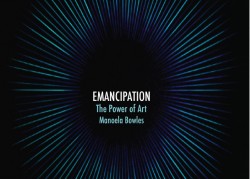Today we have shifted from the dualistic notion of right/wrong, black/white to a more contextualized, integrated and participative world of relativity. But in this world of so many possibilities of interpretation and subjective experiences we can get lost and reach a dead end where nothing is solid, nothing holds one truth; everything can be seen in a different way. To find ourselves we have to believe in something to make it real. This belief is what constitutes our world. Based on our experiences it builds the frame of mind from where we will look into the world, through the lens of our perception.
Perceptive art can be a channel to make us aware of ourselves, it can show us that our perception determines the way we see the world. So, if everything depends on our reception we can construct our own reality by choosing how to experience it. But since each one of us will have a particular experience of art, we need a critic to transcribe the experience and put it in a common ground so we can share it.
This common foundation is a frame from where to look through. To constitute this frame we have to shift to a critical vision, we have to conceptually separate art and life to be able to analyze from an autonomous position and create a code by which all subjective experience can be translated and shared. So in this gap between art and life we need a critic to “mind the gap”.
We need a guide to show us a way, give us a base so we can evolve in it. Believing in this common meaning we all can reach a same understanding that will take us together into a new perspective so we can evolve, into the road to emancipation.



